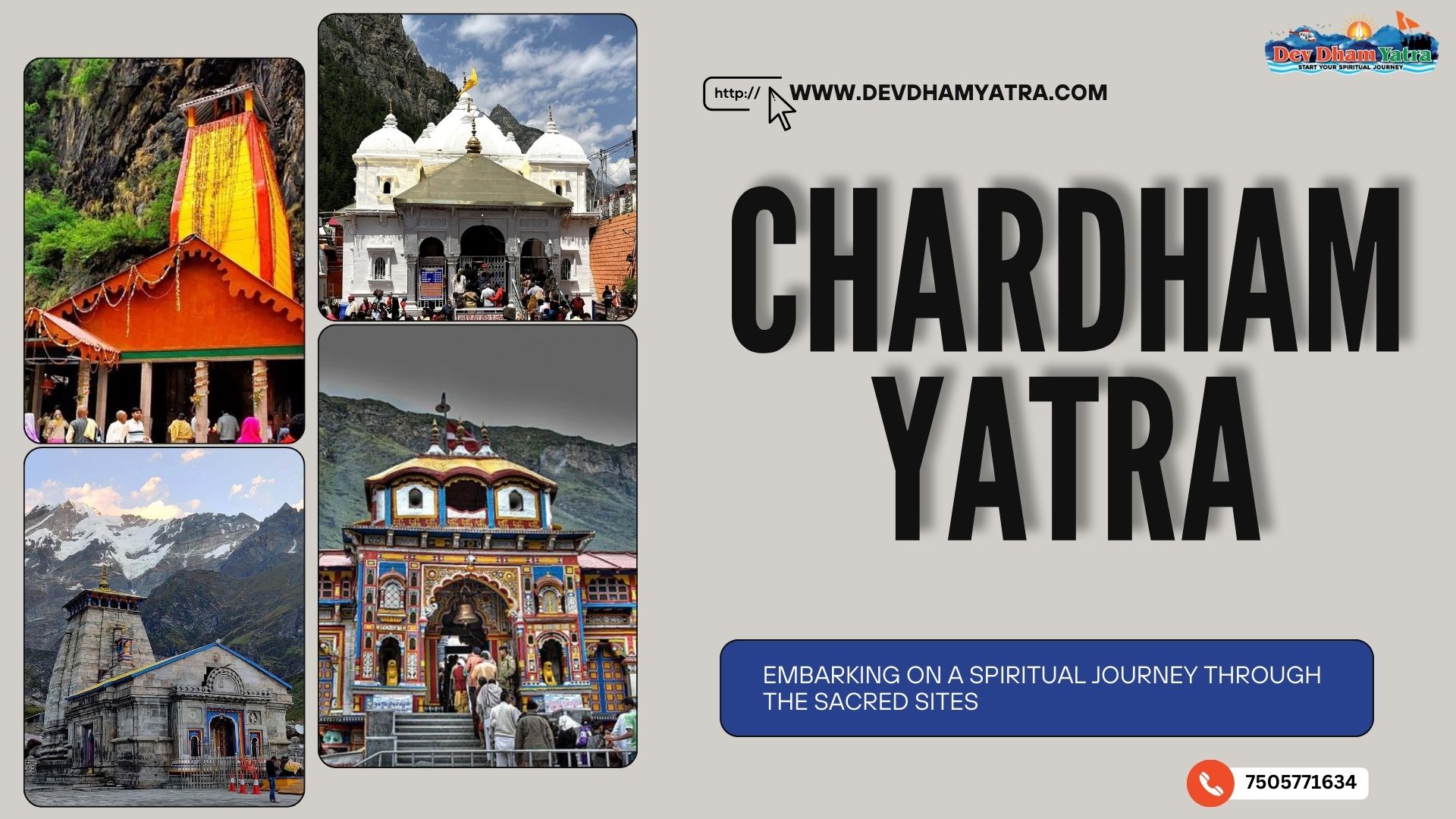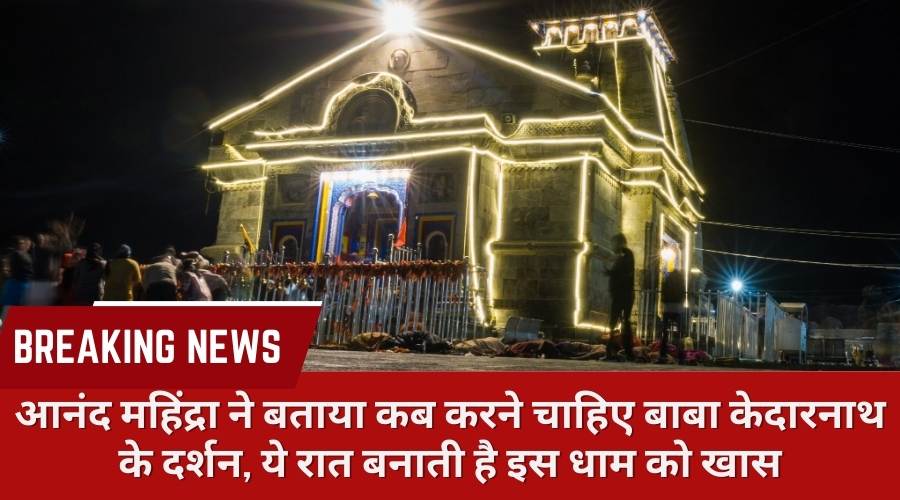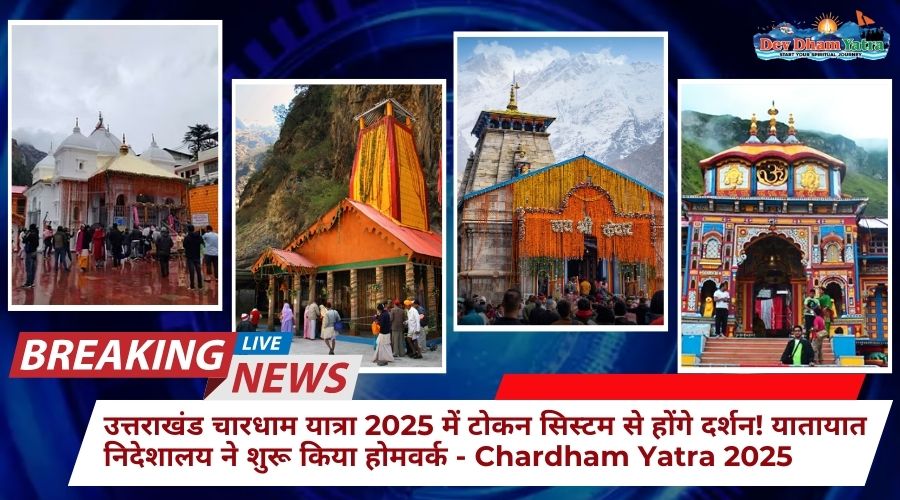Chardham Yatra, an odyssey of faith and devotion, beckons millions of pilgrims annually to the sacred sites nestled in the serene Himalayas. This spiritual journey holds profound significance for Hindus worldwide, offering a pathway to seek blessings, cleanse the soul, and attain spiritual enlightenment. In this article, we delve into the essence of Chardham Yatra, exploring its significance, means of transportation, the convenience of helicopter services, and addressing common queries to ensure a seamless pilgrimage experience.
Introduction: Discovering the Divine Odyssey Unveiling the Mystique of Chardham Yatra
Origins and Significance of Chardham Yatra
The roots of Chardham Yatra trace back to ancient Hindu scriptures, highlighting the importance of visiting four sacred shrines – Yamunotri, Gangotri, Kedarnath, and Badrinath – to attain spiritual liberation and cleanse oneself from the cycle of birth and death.
1.Yamunotri: Gateway to Spiritual Purification
Nestled in the heart of the majestic Himalayan range, Yamunotri is a sacred pilgrimage site that holds immense significance in Hindu mythology and spirituality. Situated in the Uttarkashi district of Uttarakhand, India, this serene destination is the origin of the Yamuna River, one of the holiest rivers in Hinduism. The pilgrimage to Yamunotri is not only a physical journey but a spiritual odyssey that takes devotees through breathtaking landscapes and ancient traditions.

Geography and Accessibility:
Yamunotri is perched at an elevation of approximately 3,293 meters (10,804 feet) above sea level, making it one of the Char Dham destinations in Uttarakhand. The journey to Yamunotri is not for the faint-hearted, as it involves trekking through rugged terrains. The trek, starting from the town of Hanuman Chatti, encompasses a distance of around 6 kilometers (3.7 miles) and offers mesmerizing views of the surrounding mountains.
The Yamunotri Temple:
The centerpiece of Yamunotri is the sacred Yamunotri Temple dedicated to Goddess Yamuna. Built-in the 19th century by Maharani Guleria of Jaipur, the temple is an architectural marvel adorned with intricate carvings and a gold-plated entrance. Pilgrims embark on a challenging journey to seek the blessings of Goddess Yamuna, who is believed to be the daughter of Sun God Surya and sister of Lord Yama, the God of Death.
Spiritual Significance:
Yamunotri holds a significant place in Hindu mythology, as it is believed to be the place where Sage Asit Muni performed rigorous penance. According to legends, it was here that Yamuna Devi, pleased with the sage’s devotion, manifested herself in the form of a river. Devotees believe that a dip in the holy waters of Yamuna can cleanse them of their sins and lead them towards spiritual liberation.
Yamunotri also marks the beginning of the Char Dham Yatra, a sacred pilgrimage circuit that includes Gangotri, Kedarnath, and Badrinath. Pilgrims often visit Yamunotri as the first step in their quest for spiritual enlightenment, seeking the blessings of the divine Goddess Yamuna.
Natural Beauty and Surroundings:
Apart from its religious significance, Yamunotri captivates visitors with its stunning natural beauty. The trek to the temple takes pilgrims through lush green meadows, dense forests, and snow-capped peaks. The hot water spring, Surya Kund, located near the temple, is another attraction where pilgrims can cook rice and potatoes as an offering to the deity.
Yamunotri is not just a destination; it is an experience that allows pilgrims to connect with nature, offering a sense of tranquility and spirituality that lingers long after the journey is complete.
2.Gangotri: Reverence to the Holy Ganges
Nestled in the Garhwal Himalayas of Uttarakhand, India, Gangotri is a revered pilgrimage destination that holds profound religious significance for Hindus. Situated at an elevation of about 3,100 meters (10,200 feet) above sea level, Gangotri is the origin point of the holy Ganges River. This sacred town is not only a testament to India’s rich spiritual heritage but also a gateway to the mesmerizing beauty of the Himalayan landscape.

Geography and Accessibility:
Gangotri is accessible from the town of Uttarkashi, and the journey involves navigating through challenging mountainous terrains. The pilgrimage site remains open to visitors only during the summer months, typically from May to November, due to heavy snowfall during the winter. Pilgrims and tourists alike embark on a spiritual journey to Gangotri, traversing a scenic route that offers glimpses of the Himalayan peaks and pristine landscapes.
Gangotri Temple:
The Gangotri Temple, dedicated to Goddess Ganga, is the focal point of this spiritual haven. Constructed in the early 18th century by General Amar Singh Thapa, the temple is a resplendent example of Himalayan architecture. Surrounded by the majestic Garhwal range, the temple stands as a testament to the devotion and reverence that Hindus hold for the Ganges, considered the holiest river in Hinduism.
Spiritual Significance:
The mythology associated with Gangotri is deeply rooted in Hindu beliefs. According to legend, King Bhagirath performed severe penance to bring the celestial river Ganga down to Earth to purify the souls of his ancestors. Goddess Ganga, pleased with his devotion, descended from the heavens and took the form of the sacred river. The Gangotri Temple commemorates this divine event, and pilgrims visit the site to seek the blessings of Goddess Ganga for spiritual purification and salvation.
Gaumukh Glacier:
A significant attraction near Gangotri is the Gaumukh Glacier, which is the actual source of the Ganges River. “Gaumukh” translates to “Cow’s Mouth” in Hindi, and the glacier’s terminus resembles a cow’s mouth, symbolizing the sacred emergence of the Ganges. Trekkers and pilgrims undertake the challenging trek to Gaumukh to witness this awe-inspiring natural phenomenon surrounded by the snow-clad peaks of the Gangotri glacier.
Natural Beauty and Tranquility:
Gangotri is not only a spiritual destination but also a haven for nature lovers. The town is surrounded by lush greenery, alpine meadows, and the towering peaks of the Garhwal Himalayas. The sound of the rushing Bhagirathi River, which later becomes the Ganges, adds to the serene ambiance that envelopes Gangotri, making it a perfect setting for introspection and meditation.
3.Kedarnath: Abode of Lord Shiva
Nestled in the lap of the majestic Himalayas, Kedarnath stands as a testament to both natural beauty and spiritual significance. Located in the Rudraprayag district of Uttarakhand, India, this sacred town is renowned for its ancient temple dedicated to Lord Shiva. The journey to Kedarnath is not just a physical pilgrimage but also a spiritual odyssey that unfolds against the backdrop of breathtaking landscapes.
Historical and Mythological Significance:
The Kedarnath Temple, believed to have been built in the 8th century by Adi Shankaracharya, is one of the twelve Jyotirlingas and holds immense significance in Hindu mythology. Legends say that after the Kurukshetra War, the Pandavas sought Lord Shiva’s forgiveness for their sins, and Shiva took the form of a bull to evade them. The hump of the bull is said to have appeared in Kedarnath, giving rise to the sacred shrine.
Scenic Beauty and Himalayan Majesty:
The journey to Kedarnath is not just about religious fervor but also about immersing oneself in the breathtaking beauty of the Himalayan range. Surrounded by snow-capped peaks, the town provides a serene and picturesque backdrop that captivates the hearts of pilgrims and tourists alike. The Mandakini River, flowing through the valley, adds to the natural charm of the region.
Challenging Pilgrimage:
Reaching Kedarnath is no easy feat, and the journey itself becomes a test of devotion. Pilgrims often trek for several kilometers, navigating steep trails and enduring harsh weather conditions to reach the sacred temple. The arduous trek is considered a purifying experience, symbolizing the determination and dedication required to connect with the divine.
The Kedarnath Temple:
Perched at an altitude of 3,583 meters (11,755 feet) above sea level, the Kedarnath Temple is an architectural marvel. The temple is constructed with large stone slabs and stands amidst a breathtaking panorama of snow-covered peaks. The sacred “Shivling” inside the temple is a manifestation of Lord Shiva and is the focal point of worship.
Devotee Experience:
Pilgrims often share tales of spiritual awakening and a sense of tranquility upon reaching Kedarnath. The air resonates with the sound of hymns, bells, and the flowing river, creating an atmosphere that transcends the material world. The temple’s inner sanctum provides a meditative space where devotees can connect with their inner selves and seek divine blessings.
Preservation Efforts:
Kedarnath has faced its share of challenges, most notably the devastating floods in 2013 that wreaked havoc on the region. However, significant efforts have been made to restore and rebuild the town and its infrastructure. The resilience of Kedarnath reflects the unwavering faith and commitment of both locals and pilgrims.
4.Badrinath: Journey to the Divine Abode
Nestled in the Chamoli district of Uttarakhand, India, Badrinath is a sacred pilgrimage site perched amidst the breathtaking landscapes of the Himalayan range. Situated at an elevation of approximately 3,300 meters (10,827 feet) above sea level, Badrinath is one of the Char Dham destinations and holds immense religious significance for Hindus. This tranquil town, flanked by snow-capped peaks, is home to the revered Badrinath Temple, dedicated to Lord Vishnu.
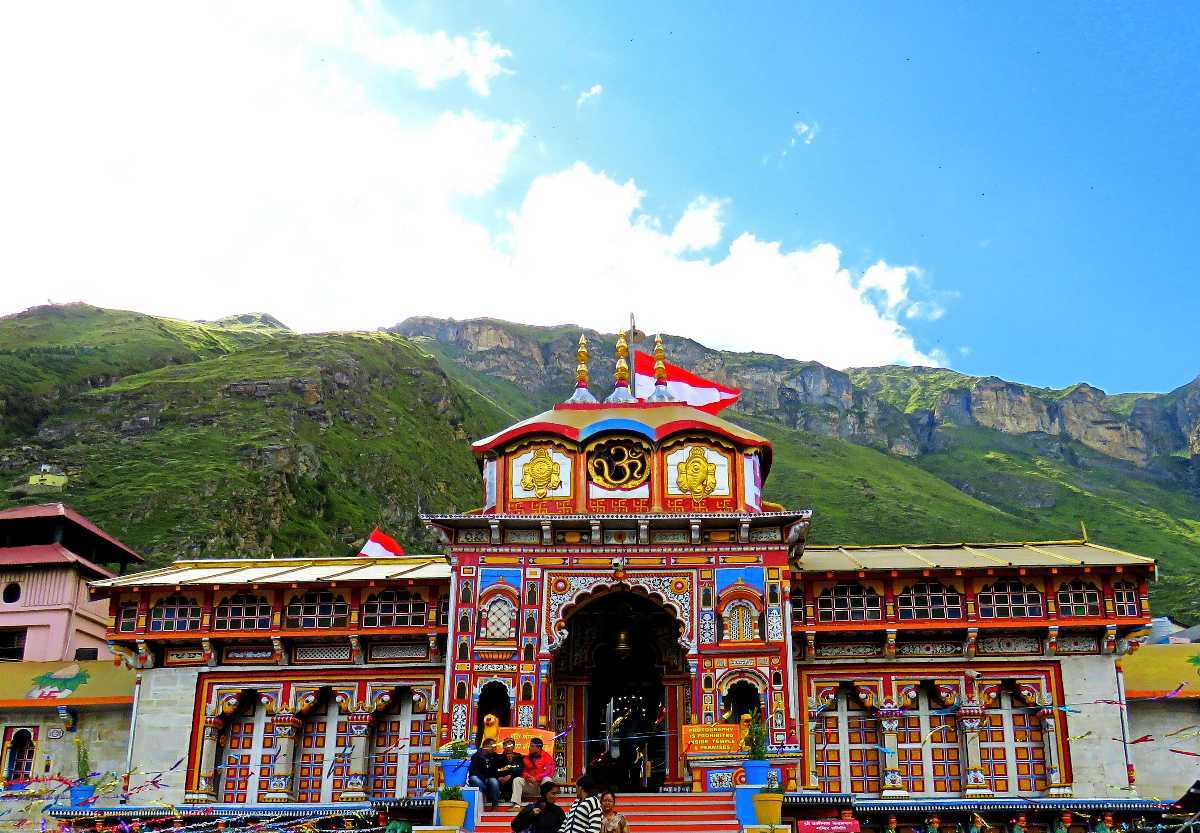
Geography and Accessibility:
Badrinath is accessible through a journey that winds through picturesque mountains and meandering rivers. The pilgrimage season typically runs from May to November when the weather is conducive for travel. The town remains snowbound during the winter months, adding to its mystical allure. Pilgrims embark on a spiritual journey, traversing the rugged terrains to seek the blessings of Lord Badri Vishal, an incarnation of Lord Vishnu.
Badrinath Temple:
The Badrinath Temple, an architectural marvel, is the focal point of the town. Believed to have been established by Adi Shankaracharya in the 9th century, the temple underwent subsequent renovations. The imposing structure, made of stone and adorned with intricate carvings, stands against the backdrop of the Neelkanth Peak, creating a mesmerizing sight. Pilgrims visit the temple to offer prayers and seek the divine blessings of Lord Badri Vishal.
Spiritual Significance:
Badrinath is part of the Char Dham Yatra, a pilgrimage circuit that also includes Gangotri, Yamunotri, and Kedarnath. According to Hindu mythology, Badrinath is considered one of the holiest shrines, and it is believed that Lord Vishnu meditated here for thousands of years. The town is also associated with the epic Mahabharata, where Pandavas are said to have taken refuge during their journey to the Himalayas.
Hot Springs and Tapt Kund:
Badrinath is known for its natural hot springs, with Tapt Kund being the most prominent. Pilgrims often take a dip in the warm waters of Tapt Kund before entering the Badrinath Temple, considering it a purifying ritual. The hot springs are believed to have therapeutic properties and are a testament to the geological wonders of the region.
Surrounding Beauty and Mana Village:
Apart from its religious significance, Badrinath offers breathtaking views of the Himalayan peaks, including Neelkanth and Nar Parvat. The nearby Mana village, believed to be the last inhabited village before the Indo-Tibetan border, adds cultural richness to the region. Visitors can explore the village, visit the Vyas Gufa (cave), and witness the confluence of the Saraswati and Alaknanda rivers.
Means of Transportation for Chardham Yatra
Navigating through the rugged terrain of the Himalayas requires careful planning and consideration of transportation options. Pilgrims can choose from a variety of modes, including road transport, railways, and helicopter services, to embark on their sacred journey with ease and convenience.
1. Road Transport: Embracing the Journey
The road network connecting the Chardham sites offers pilgrims a scenic and adventurous route to embark on their spiritual odyssey. From deluxe buses to private taxis, travelers have a plethora of options to choose from, ensuring a comfortable and memorable journey amidst the breathtaking landscapes of the Himalayas.
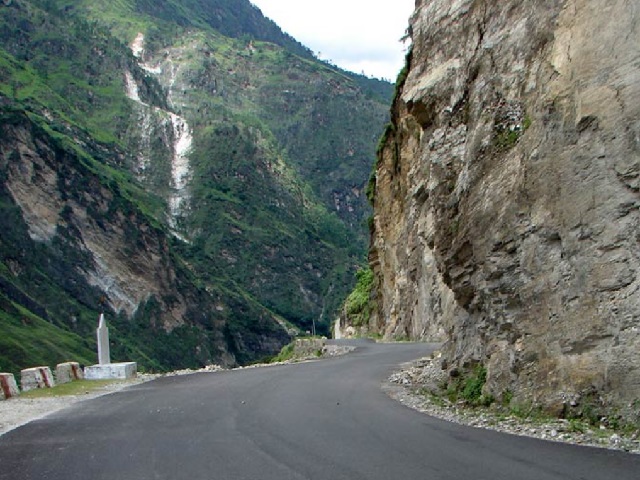
2. Railways: A Tranquil Passage
For those seeking a blend of comfort and convenience, the rail network provides an alternative mode of transportation to reach the foothills of the Himalayas. Pilgrims can opt for train services to reach nearby railway stations, from where they can continue their journey to the Chardham sites via road transport.

3. Helicopter Services: A Swift Ascent to Divinity
In recent years, helicopter services have emerged as a popular choice for pilgrims seeking a swift and hassle-free journey to the sacred shrines of Chardham. With helipads located near each of the four sites, travelers can bypass the arduous treks and embark on a memorable aerial adventure amidst the towering peaks of the Himalayas.
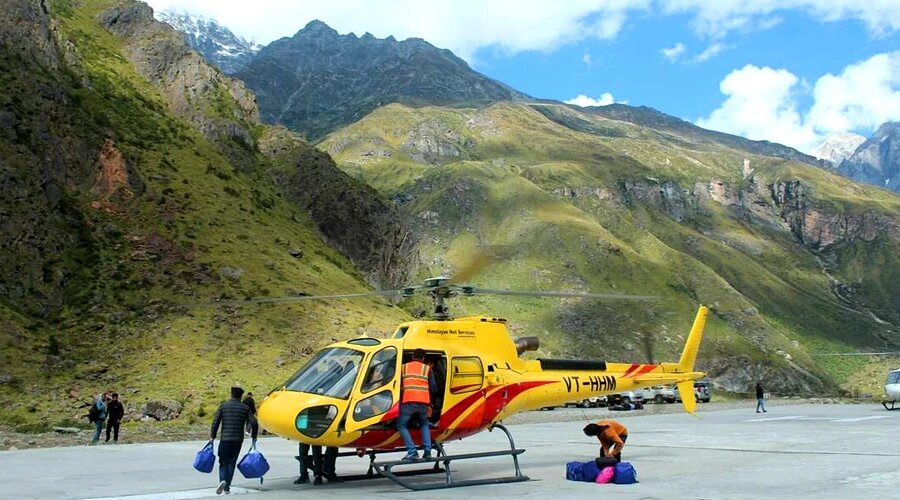
Conclusion: Embracing the Spiritual Sojourn
Chardham Yatra transcends mere pilgrimage; it is a sacred sojourn that nourishes the soul and strengthens the bond between the devotee and the divine. Whether traversing the rugged terrain on foot, cruising through the winding roads, or soaring above the clouds in a helicopter, every step of the journey is imbued with spirituality and devotion.
FAQs (Frequently Asked Questions)
Q1. What is the best time to embark on Chardham Yatra?
A1. The ideal time for Chardham Yatra is during the months of May to November when the weather is favorable and the pilgrimage sites are accessible.
Q2. Is it necessary to undertake the entire Chardham circuit at once?
A2. No, pilgrims have the flexibility to visit individual sites based on their preferences and time constraints.
Q3. Are there accommodation facilities available at the Chardham sites?
A3. Yes, there are various accommodation options ranging from budget guesthouses to luxury hotels near the pilgrimage sites.
Q4. What should pilgrims pack for Chardham Yatra?
A4. Pilgrims should pack essential items such as warm clothing, sturdy footwear, medications, and personal hygiene products for a comfortable journey.
Q5. Are there medical facilities available along the Chardham route?
A5. Yes, there are medical facilities and emergency services available at strategic locations along the Chardham route to ensure the well-being of pilgrims.
Q6. Can elderly or physically challenged individuals undertake Chardham Yatra?
A6. Yes, arrangements such as palanquins and ponies are available for elderly or physically challenged individuals to facilitate their pilgrimage journey.
Q7. Are there any restrictions or guidelines for photography at the Chardham sites?
A7. While photography is generally allowed at the Chardham sites, visitors are advised to respect the sanctity of the surroundings and refrain from capturing images in restricted areas.
Q8. Is it safe to travel to Chardham Yatra during the monsoon season?
A8. While the monsoon season brings lush greenery to the Himalayan region, it also poses challenges such as landslides and road closures. Pilgrims are advised to exercise caution and stay updated on weather forecasts before planning their journey during this time.
Q9. How long does it take to complete the entire Chardham Yatra circuit?
A9. The duration of Chardham Yatra varies depending on factors such as the mode of transportation chosen and the time allocated for exploring each site. On average, it takes approximately 10 to 14 days to complete the entire circuit.
Q10. Are there guided tour packages available for Chardham Yatra?
A10. Yes, several travel agencies offer guided tour packages for Chardham.
Read more content:
Kedarnath Yatra | Packages
Chardham Yatra | Packages
Do Dham Yatra | Packages
Camping and Rafting | Packages
Chardham Yatra by Helicopter| Packages

